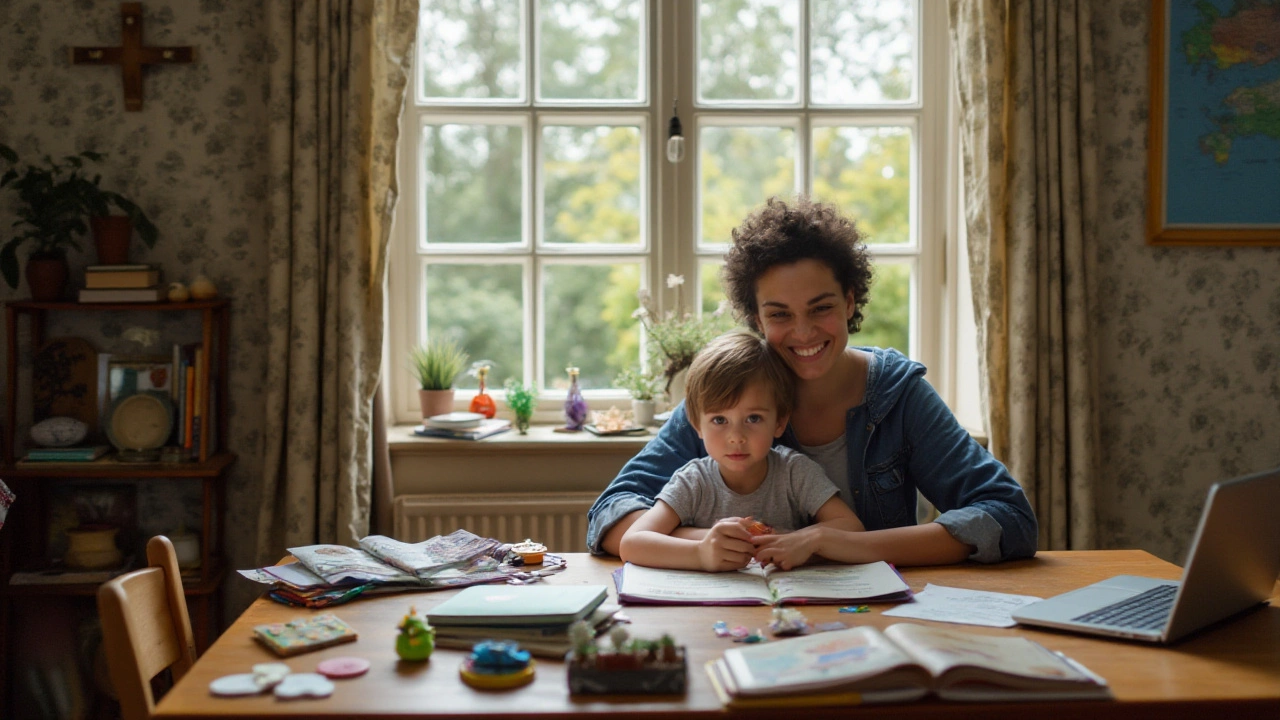Quick Start Homeschooling: Your First 7 Days
Thinking about homeschooling but feeling stuck? You don’t need a massive plan or fancy supplies. In the next week you can have a simple system that works for you and your kids. Below are the bare‑bones steps you can follow right now.
Getting Ready: What You Need
First, pick a space. It can be a kitchen table, a corner of the living room, or a small desk. The key is a spot with good light and minimal distractions. Next, gather basic supplies: a few notebooks, pencils, a timer, and any books you already own. You don’t have to buy a whole curriculum upfront; many free resources are online.
Write down a short schedule. Keep it simple: 30 minutes of reading, 20 minutes of hands‑on activity, 15 minutes of break, then 30 minutes of math or science. A visual schedule on the wall helps kids see what’s coming and stay on track.
Set rules together. Ask your child what they need to feel focused—maybe a quiet room or a short music break. Agree on start and end times, and stick to them. Consistency builds trust and makes the whole process smoother.
First Lessons and Daily Routine
Start with subjects you feel comfortable teaching. Reading and spelling are great entry points because you can use any book you already have. Pick a short story, read together, then ask three simple questions about the plot. This builds comprehension without a lot of prep.
For math, use everyday objects. Count fruit, measure ingredients for a snack, or use a deck of cards for addition practice. Kids love seeing real‑world uses for numbers, and the activity stays low‑stress.
Include a hands‑on project each day. It could be drawing a map of the backyard, building a simple bird feeder, or doing a science experiment with vinegar and baking soda. Projects keep learning exciting and give a natural break from seated work.
End every day with a quick reflection. Ask, "What was the best part?" and "What was tricky?" Write the answers in a notebook. Over time you’ll see patterns and can adjust the schedule to match your child’s pace.
Remember, homeschooling is flexible. If a lesson runs short, add a fun reading break or a quick walk outside. If it runs long, move the next activity to the following day. The goal is steady progress, not perfection.
By the end of week one you’ll have a routine, a learning space, and a sense of what works for your family. From there you can explore more resources, join online parent groups, and gradually expand the subjects you cover. Homeschooling doesn’t have to start big—it just needs to start.
-
22
- 0
Switching to homeschooling can seem daunting, but with the right resources and planning, the transition can be made smoothly and efficiently. This article explores the necessary steps to rapidly shift from traditional schooling to home education. It provides insights into curriculum choices, legal considerations, and community resources that can aid in making homeschooling a viable and rewarding option for families. Discover how to overcome common challenges and create a thriving learning environment at home. Read more
Tags Weight
- education
- exam preparation
- study tips
- adult education
- online courses
- adult learning
- lifelong learning
- distance learning
- GCSE revision
- online education
- private tutoring
- special needs education
- scholarships
- remote learning
- scholarship tips
- financial aid
- international students
- effective learning
- e-learning
- education funding

